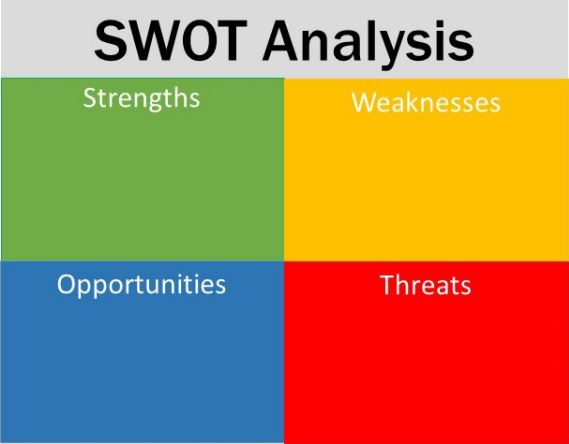Get Easy Health Digest™ in your inbox and don’t miss a thing when you subscribe today. Plus, get the free bonus report, Mother Nature’s Tips, Tricks and Remedies for Cholesterol, Blood Pressure & Blood Sugar as my way of saying welcome to the community!
Can this paper exercise make you thinner, fitter, happier?

When it comes to creating a strong and viable health and wellness plan, it helps to have an open mind and use what works.
But first let’s talk about best laid plans…
With anything important, we’ve been taught that a plan can help you reach your goals.
As a kid, I quickly learned that good grades resulted in a cash reward from my folks… and, with a little planning, that’s how I got the coolest bicycle on the block.
That plan incentivized me to do my best, and yes, I did achieve my goal. Of course as we grow to adulthood, we find just about anything worth achieving requires a plan. So, why then, do our best laid plans — like a weight loss or fitness goal — often blow up, leaving us disappointed and wondering what happened?
Sometimes we have to look deeper…
I’m an avid student of systems and processes for self-improvement, as I’ve derived great benefit when seeking to improve my own quality of life. Most often this has meant looking outside of the healthcare field for some of the best tools to effect real change — like SWOT…
The SWOT Analysis Tool
In business marketing, SWOT is a process for strategic development based on helping you understand your strengths and weaknesses, while identifying your opportunities and threats.
With just a few modifications, SWOT analysis can be a great tool for health and wellness strategizing — because it can make visible those stumbling blocks that have prevented you from feeling better, being healthier, getting stronger, losing weight and so on, that you may not have been aware of.
A SWOT analysis is created within a four-box matrix, wherein each quadrant is used to identify one of the four SWOT elements. In our two-part exercise, you’ll take a look at each of these elements depicted in the graphic, and consider them as they relate to your health and wellness.
To make your own SWOT analysis tool, just grab some paper and draw a line down the center of the page, top to bottom; then draw another center line half way down the page, left to right — so you end up with four equal quadrants. Title each quadrant, mimicking the SWOT graphic…
Now, you’ll need to fill in each section. To do that, I’ve got questions below you can consider before filling in the grid. Read through the instructions below before coming back to the first section and reviewing the questions to help you determine your answers.

1. Strengths
Fill in this quadrant with your best strengths that could help you achieve progress.
- What are you currently doing well? (e.g., exercising, sleeping, eating right, taking supplements, meditating)
- What are your unique wellness skills? (e.g., open mind to new things, researching local wellness experts and making appointments, sticking to diet or exercise plans)
- What have you tried (or do now) that is working? (e.g., specific diet, exercise plan, yoga, acupuncture)
- What are the best aspects of your health? (e.g., you are fit, low pain levels, sleep well, able to walk or exercise)
- Think of other questions to ask yourself, or simple try to recall your health and wellness strengths, then add them to the quadrant.
2. Weaknesses
Fill in this quadrant with those personal traits that could stall or hinder your progress.
- Where is the room for most improvement? (e.g., pain relief, weight loss, sedentary lifestyle, mental attitude, sleep)
- What resources do you lack? (e.g., doctor or wellness mentor, financial means, knowledge about what to do, time, transportation)
- Where do you need the most support? (getting motivated, understanding of issues, prioritizing)
3. Opportunities
Fill in this quadrant with those external conditions that will help you achieve your goals.
- What are your health and wellness goals? (e.g., weight loss, pain relief, range of motion, peace of mind, more active lifestyle, more social interaction)
- How can you do more now to improve your health and wellness? (e.g., better sleep, make an appointment, stop snacking between meals, go for a walk every day).
- What technology can help you achieve your goals? (e.g., scale, fitbit, apps, SWOT analysis)
- Are there related programs or people that can help you? (meetup groups, local fitness or yoga class, online counseling, company wellness incentives)
4. Threats
Fill in this quadrant with those conditions outside your direct control that could derail your wellness lifestyle.
- What obstacles do you face? (e.g., looming loss of insurance, family unsupportive of goals, too many food-based social events, upcoming surgery)
- How is your home/work psychological environment? (e.g., stressful, violent, lonely)
- What is the condition of your home/work environment? (e.g., lead paint, asbestos, overhead fluorescent lighting, toxic cleaning chemicals, mold or mildew)
Now, don’t rush through this part of the exercise. Take your time to consider the questions I laid out for each SWOT section. Consider all sides of your health and wellness life, and as you do, add your answers to the SWOT matrix. When that part of the exercise is complete, you’ll see them all together — and you will learn more about yourself than you might imagine.
Let’s meet up again next week, and in my regular Wednesday post, we’ll look at how to cross-reference the SWOT matrix you build to come up with an outline for your best chances of success in achieving your health and wellness goals.












